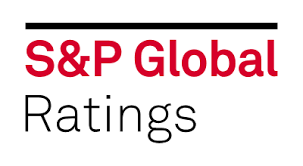New Delhi: After a gap of about 10 years, S&P Global Ratings Wednesday upped India’s outlook to positive from stable on robust growth prospects for next three years and public spending, and raised hopes for an upgrade in two years provided the government continues reforms and policies to keep fiscal deficit under check.
While retaining India’s sovereign rating at the lowest investment grade of ‘BBB-‘, S&P said its expects broad continuity in economic reforms and fiscal policies, irrespective of the election outcome.
Results of the ongoing general elections will be announced June 4.
“India outlook revised to positive on robust growth and rising quality of Government spend,” S&P said, while affirming long-term rating at ‘BBB-‘.
The ratings are looked at by investors as a barometer of the country’s creditworthiness and has impact on borrowing costs. Last in 2014, S&P had upped India’s outlook to stable from negative.
“Our positive outlook on India is predicated on its robust economic growth, pronounced improvement in the quality of government spending, and political commitment to fiscal consolidation. We believe these factors are coalescing to benefit credit metrics,” S&P said.
Irrespective of the June 2024 general election results, S&P expects the incoming government to carry on economic reforms to support the “growth vigor”, continued infrastructure investment drive, and commitment to fiscal consolidation.
The finance ministry has been pushing for a rating upgrade on the back of improved fiscal management and strong economic fundamental, including high foreign exchange reserves.
S&P’s rating commentary comes within a week of RBI’s record Rs 2.10 lakh crore dividend transfer to the government. The funds may be used to reduce the Centre’s fiscal deficit.
The government hopes to bring down fiscal deficit to 5.1 per cent of GDP by March 2025 and further to 4.5 per cent by March 2026.
“We expect sound economic fundamentals to underpin the growth momentum over the next two to three years. Regardless of the election outcome, we expect broad continuity in economic reforms and fiscal policies,” S&P said.
It said the composition of government spending has been transformed, with an increasing share going to infrastructure. This will ease bottlenecks to put the country on a higher growth trajectory.
S&P said India’s robust economic expansion is having a constructive impact on its credit metrics.
“We expect sound economic fundamentals to underpin the growth momentum over the next two to three years. Regardless of the election outcome, we expect broad continuity in economic reforms and fiscal policies,” S&P said.
The positive outlook reflects S&P’s view that continued policy stability, deepening economic reforms, and high infrastructure investment will sustain long-term growth prospects.
“That, along with cautious fiscal and monetary policy that diminishes the government’s elevated debt and interest burden while bolstering economic resilience, could lead to a higher rating over the next 24 months,” S&P said.
S&P rating action, however, failed to enthuse stock market with BSE Sensex falling 667.55 points to 74,502.90.
S&P said the Indian economy has staged a “remarkable comeback” from the COVID-19 pandemic. It forecasts India’s real GDP growth at 6.8 per cent this year, which compares favourably with emerging market peers amid a broad global slowdown.
The agency estimates real GDP growth in the past three years to have averaged 8.1 per cent annually, the highest in the Asia-Pacific region.
It expects these growth dynamics to continue to play out in the medium term, with GDP expanding close to 7 per cent annually over the next three years which will have a moderating effect on the ratio of government debt to GDP despite still wide fiscal deficits.
S&P said the quality of government spending has improved in the past four to five years and public investment and consumer momentum will underpin solid growth prospects over the next three to four years.
The Modi administration has increasingly shifted budget allocation to infrastructure spending. Capital expenditure is scheduled to increase to Rs 11 lakh crore, or about 3.4 per cent of GDP in fiscal 2025. This is almost 4.5x from a decade before.
S&P believes that the improvements in infrastructure and connectivity in India will remove chokepoints, which are hindering long-term economic growth.
India’s weak fiscal settings had always been the most vulnerable part of its sovereign ratings profile.
All three major global rating agencies — S&P, Fitch and Moody’s — have accorded the lowest investment grade rating to India. Fitch and Moody’s still have a stable outlook on India.
S&P said it may raise the ratings if India’s fiscal deficit narrows meaningfully such that the general government debt falls below 7 per cent of GDP on a structural basis.
“We may also raise the ratings if we observe a sustained and substantial improvement in the central bank’s monetary policy effectiveness and credibility, such that inflation is managed at a durably lower rate over time,” it said.
PTI
